Fast Interrogation of Fiber Bragg Gratings with Electro-Optical Dual Optical Frequency Combs
Abstract
:1. Introduction
2. Dual-Optical Frequency Comb-Based FBG Interrogation System
2.1. The Interrogation Method
2.2. Dual Optical Frequency Comb Generation
2.3. Implementation of the Interrogation System
3. Experimental Results
3.1. Experimental Set-up
3.2. Measurement of Vibrations
3.3. Measurement of Ultrasounds
4. Conclusions
Acknowledgments
Author Contributions
Conflicts of Interest
References
- Hill, K.O.; Meltz, G. Fiber Bragg grating technology fundamentals and overviews. J. Lightwave Technol. 1997, 15, 1263–1276. [Google Scholar] [CrossRef]
- Kersey, A.D.; Davis, M.A.; Patrick, H.J.; LeBlanc, M.; Woo, K.P.; Askins, C.G.; Putnum, M.A.; Friebele, E.J. Fiber Grating Sensors. J. Lightwave Technol. 1997, 15, 1442–1463. [Google Scholar] [CrossRef]
- Kuang, K.S.C.; Kenny, R.; Whelan, M.P.; Cantwell, W.J.; Chalker, P.R. Embedded fibre Bragg grating sensors in advanced composite materials. Compos. Sci. Technol. 2001, 61, 1379–1387. [Google Scholar] [CrossRef]
- Minneman, M.P.; Hoover, E.; Boschert, P.; Ensher, J.; Crawford, M.; Derrickson, D.; Kersey, A.D. Very high sensor-density multiplexing using a wavelength-to-time domain reflectometry approach based on a rapidly swept Akinetic-laser. In Proceedings of the 24th International Conference on Optical Fibre Sensors, Curitiba, Brazil, 28 September–2 October 2015.
- Guo, H.; Xiao, G.; Mrad, N.; Yao, J. Fiber optic sensors for structural health monitoring of air platforms. Sensors 2011, 11, 3687–3705. [Google Scholar] [CrossRef] [PubMed]
- Jones, D.J.; Diddams, S.A.; Ranka, J.K.; Stentz, A.; Windeler, R.S.; Hall, J.L.; Cundiff, S.T. Carrier-envelope phase control of femtosecond mode-locked lasers and direct optical frequency synthesis. Science 2000, 288, 635–639. [Google Scholar] [CrossRef] [PubMed]
- Holzwarth, R.; Udem, T.; Hänsch, T.W.; Knight, J.C.; Wadsworth, W.J.; Russell, P.S.J. Optical frequency synthesizer for precision spectroscopy. Phys. Rev. Lett. 2000, 85, 2264. [Google Scholar] [CrossRef] [PubMed]
- Schiller, S. Spectrometry with frequency combs. Opt. Lett. 2002, 27, 766–768. [Google Scholar] [CrossRef] [PubMed]
- Prior, E.; de Dios, C.; Criado, A.R.; Ortsiefer, M.; Meissner, P.; Acedo, P. Experimental study of VCSEL-based optical frequency comb generators. IEEE Photonics Technol. Lett. 2014, 26, 2118–2121. [Google Scholar]
- Zhu, F.; Mohamed, T.; Strohaber, J.; Kolomenskii, A.A.; Udem, T.; Schuessler, H.A. Real-time dual frequency comb spectroscopy in the near infrared. Appl. Phys. Lett. 2013, 102, 121116. [Google Scholar] [CrossRef]
- Kuse, N.; Ozawa, A.; Kobayashi, Y. Static FBG strain sensor with high resolution and large dynamic range by dual-comb spectroscopy. Opt. Express 2013, 21, 11141–11149. [Google Scholar] [CrossRef] [PubMed]
- Martin-Mateos, P.; Ruiz-Llata, M.; Posada, J.; Acedo, P. Dual comb architecture for fast spectroscopic measurements and spectral characterization. IEEE Photonics Technol. Lett. 2015, 27, 1309–1312. [Google Scholar] [CrossRef]
- Culshaw, B.; Thursby, G.; Betz, D.; Sorazu, B. The detection of ultrasound using fiber-optic sensors. IEEE Sens. J. 2008, 8, 1360–1367. [Google Scholar] [CrossRef] [Green Version]
- Prior, E.; de Dios, C.; Criado, Á.R.; Ortsiefer, M.; Meissner, P.; Acedo, P. Expansion of VCSEL-Based Optical Frequency Combs in the Sub-THz Span: Comparison of Non-Linear Techniques. J. Light. Technol. 2016, 34, 4135–4142. [Google Scholar] [CrossRef]
- Jerez, B.; Martín-Mateos, P.; Prior, E.; de Dios, C.; Acedo, P. Gain-switching injection-locked dual optical frequency combs: Characterization and optimization. Opt. Lett. 2016, 41, 4293–4296. [Google Scholar] [CrossRef] [PubMed]
- Wu, R.; Torres-Company, V.; Leaird, D.E.; Weiner, A.M. Supercontinuum-based 10-GHz flat-topped optical frequency comb generation. Opt. Express 2013, 21, 6045–6052. [Google Scholar] [CrossRef] [PubMed]
- Durán, V.; Andrekson, P.A.; Torres-Company, V. Electro-optic dual-comb interferometry over 40 nm bandwidth. Opt. Lett. 2016, 41, 4190–4193. [Google Scholar] [CrossRef] [PubMed]



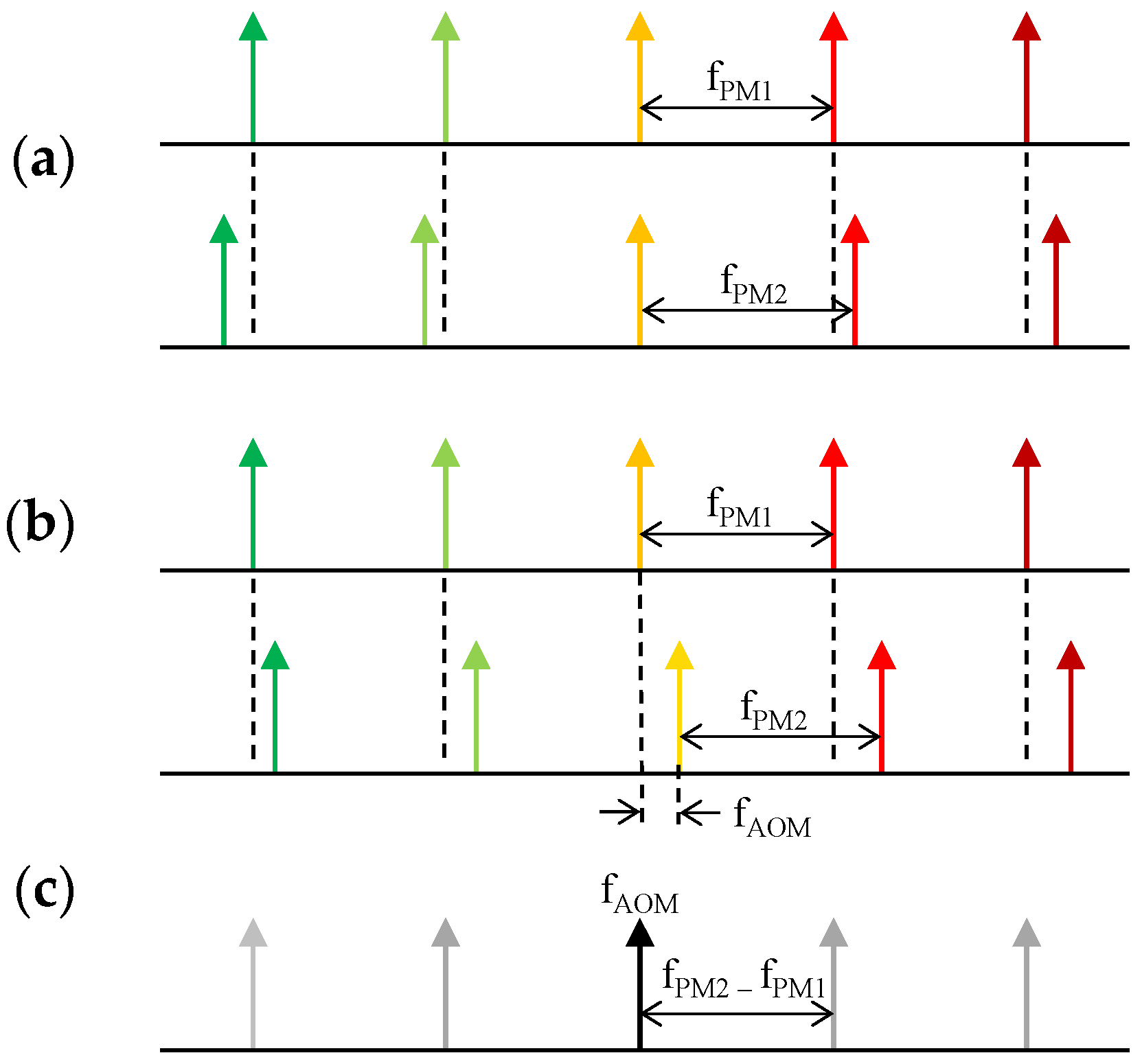
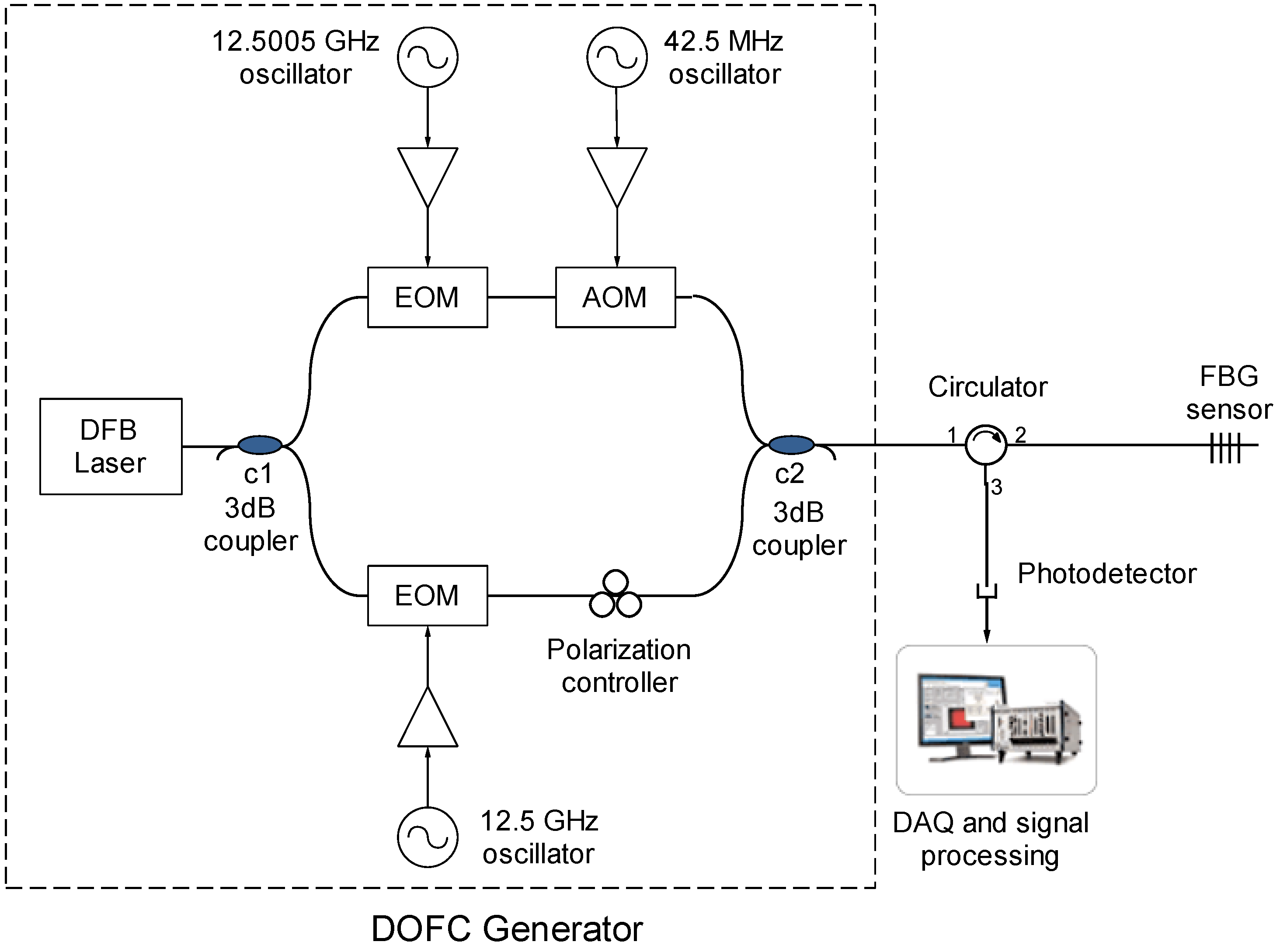
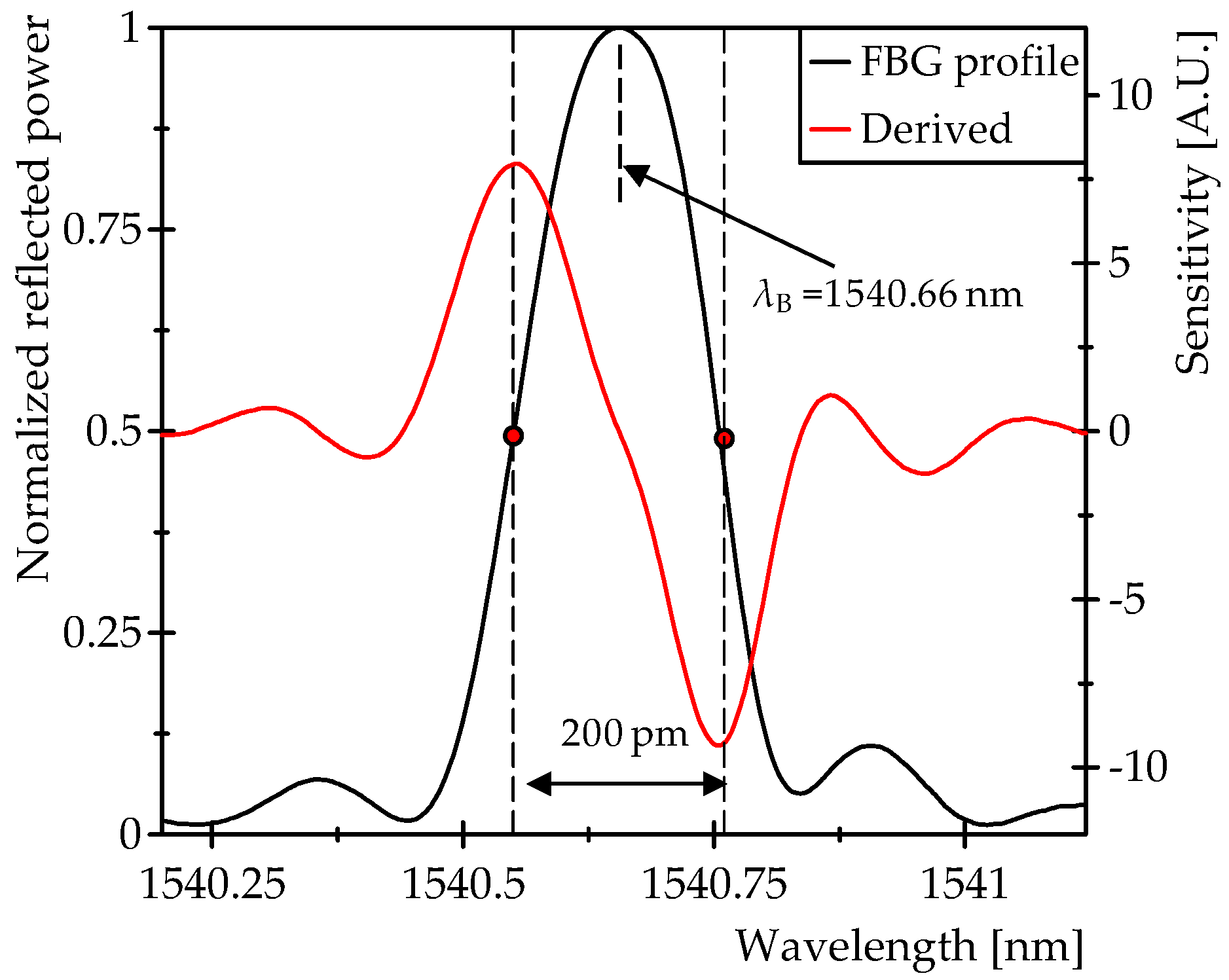
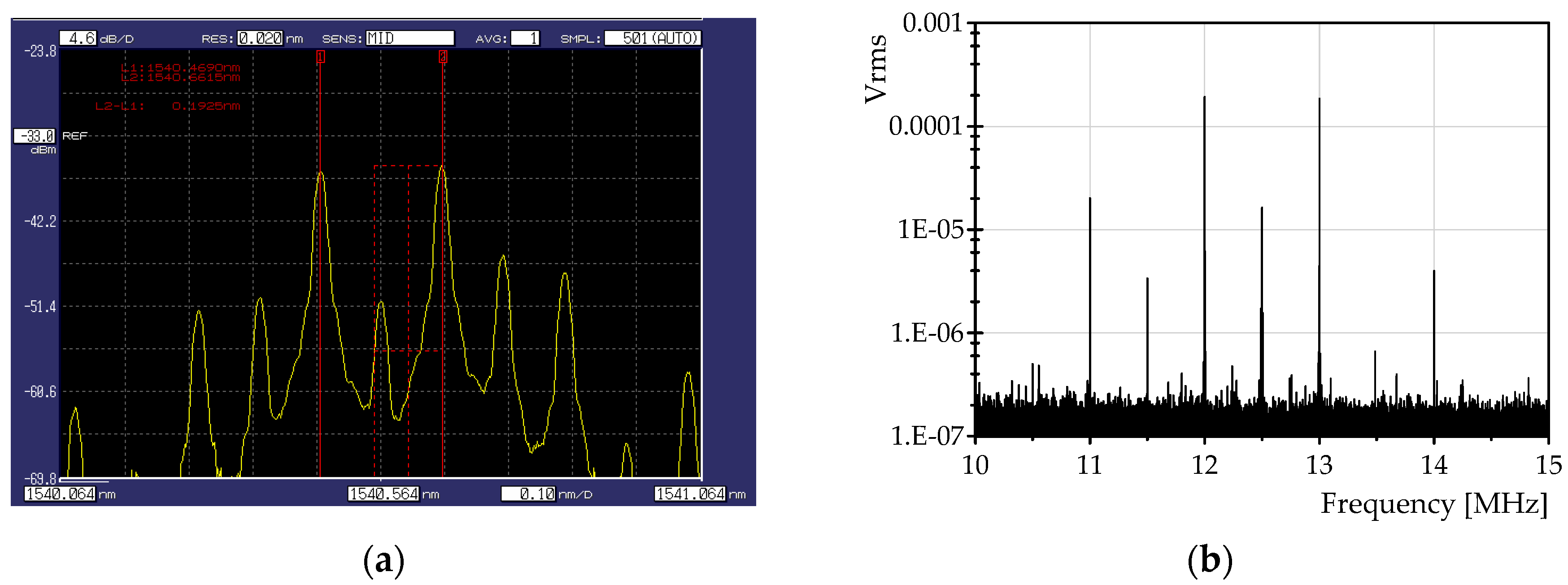
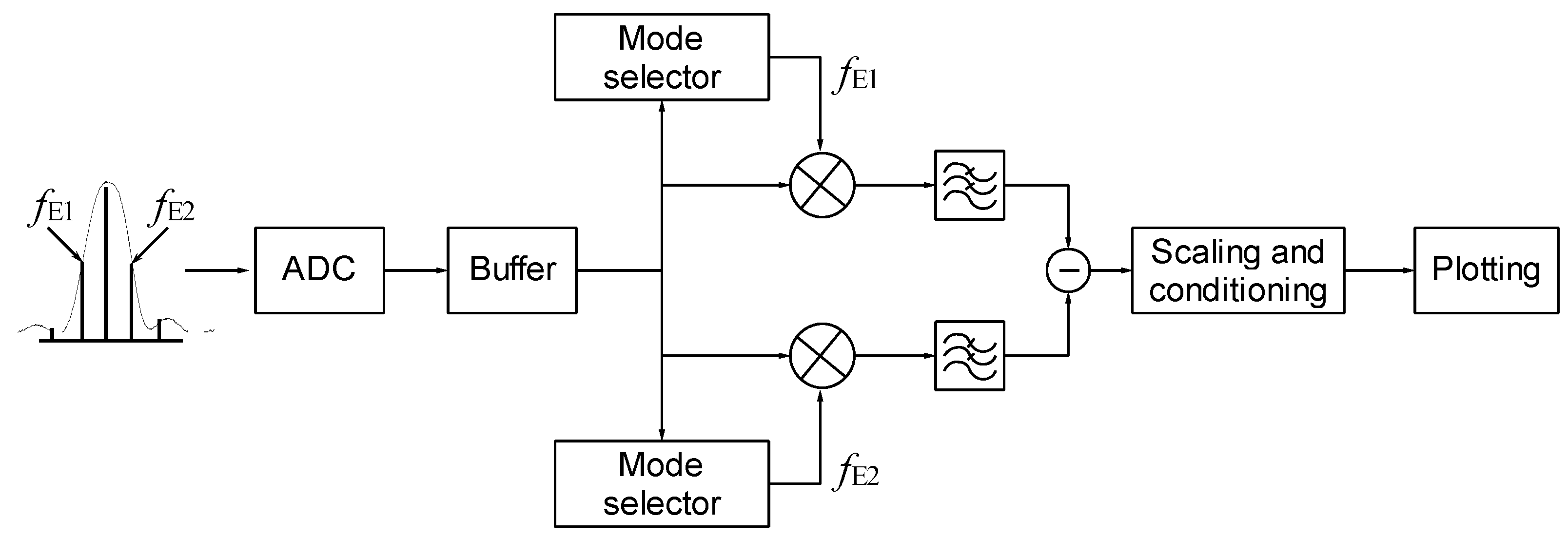
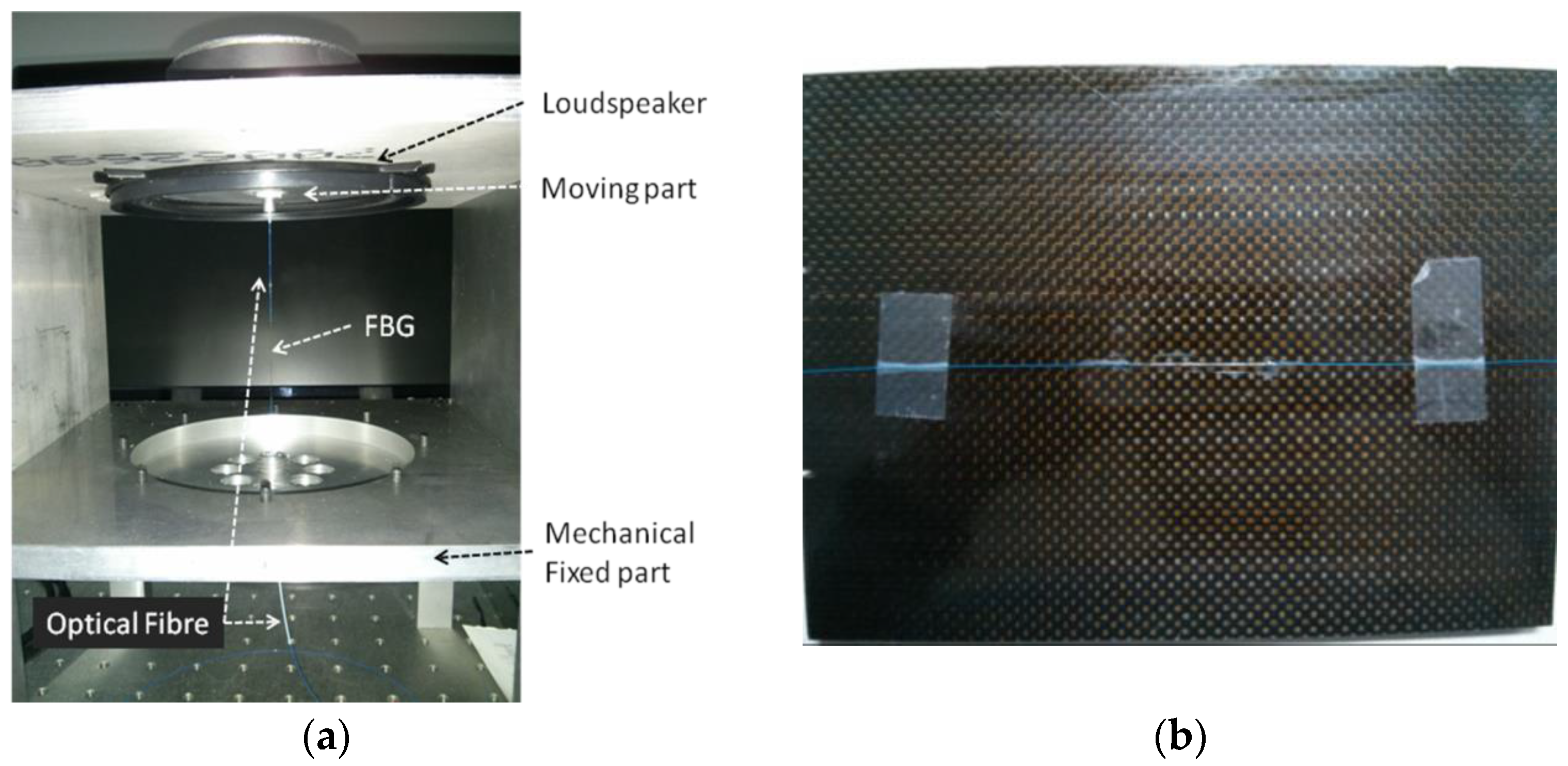
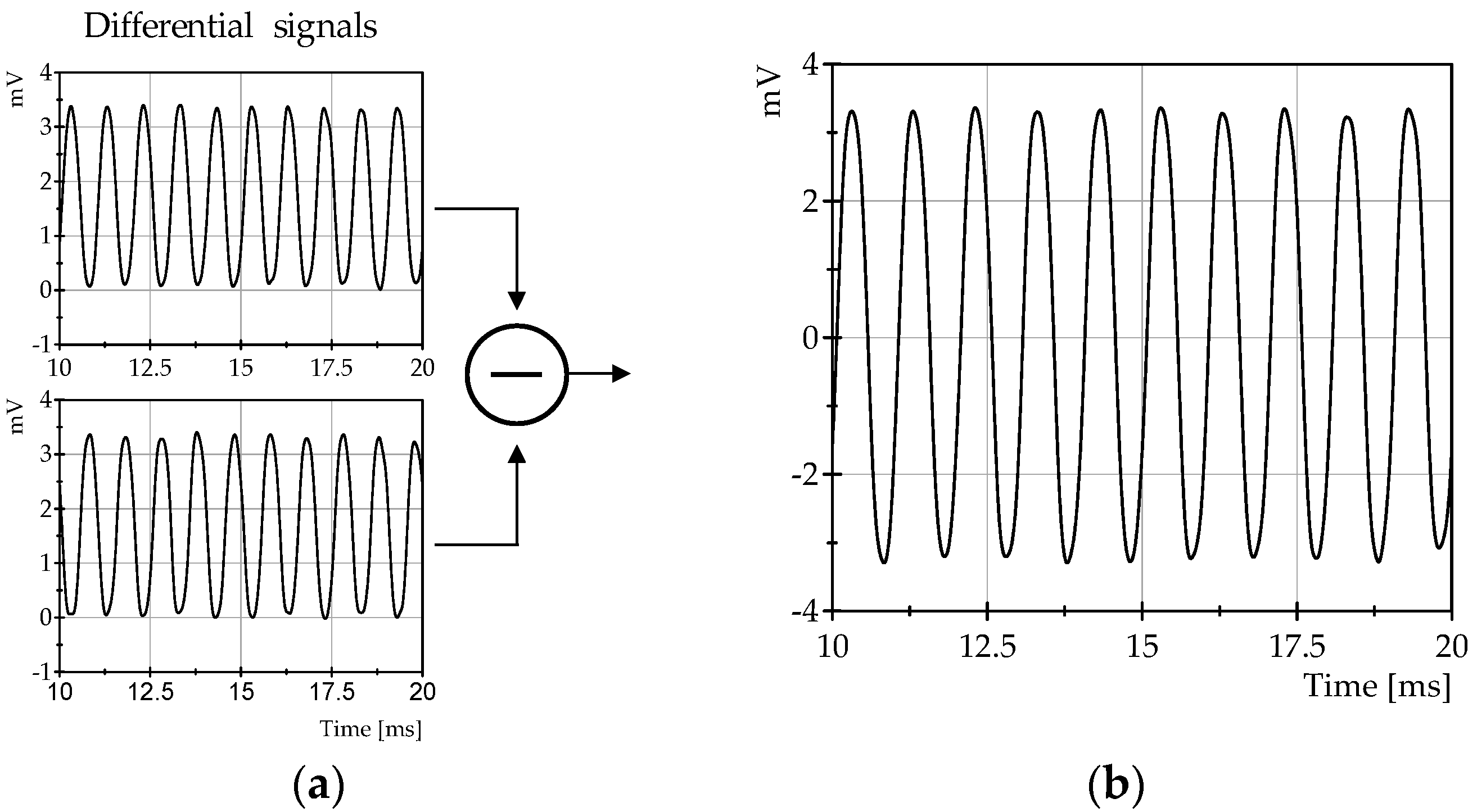
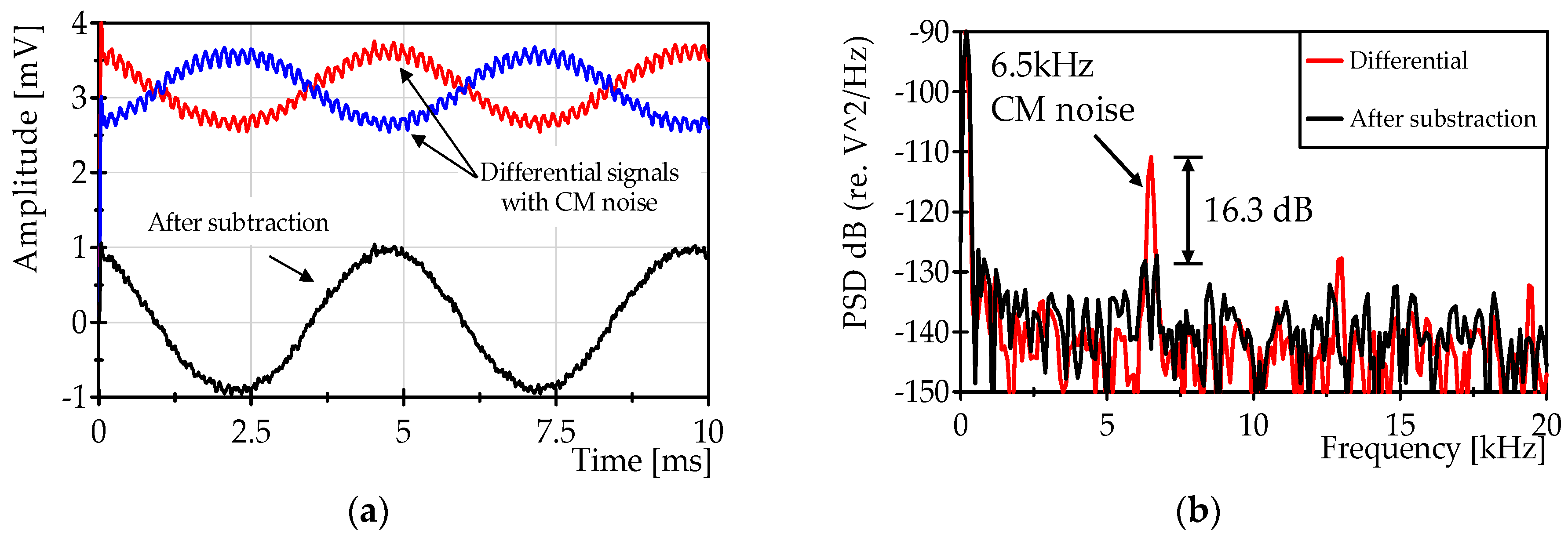
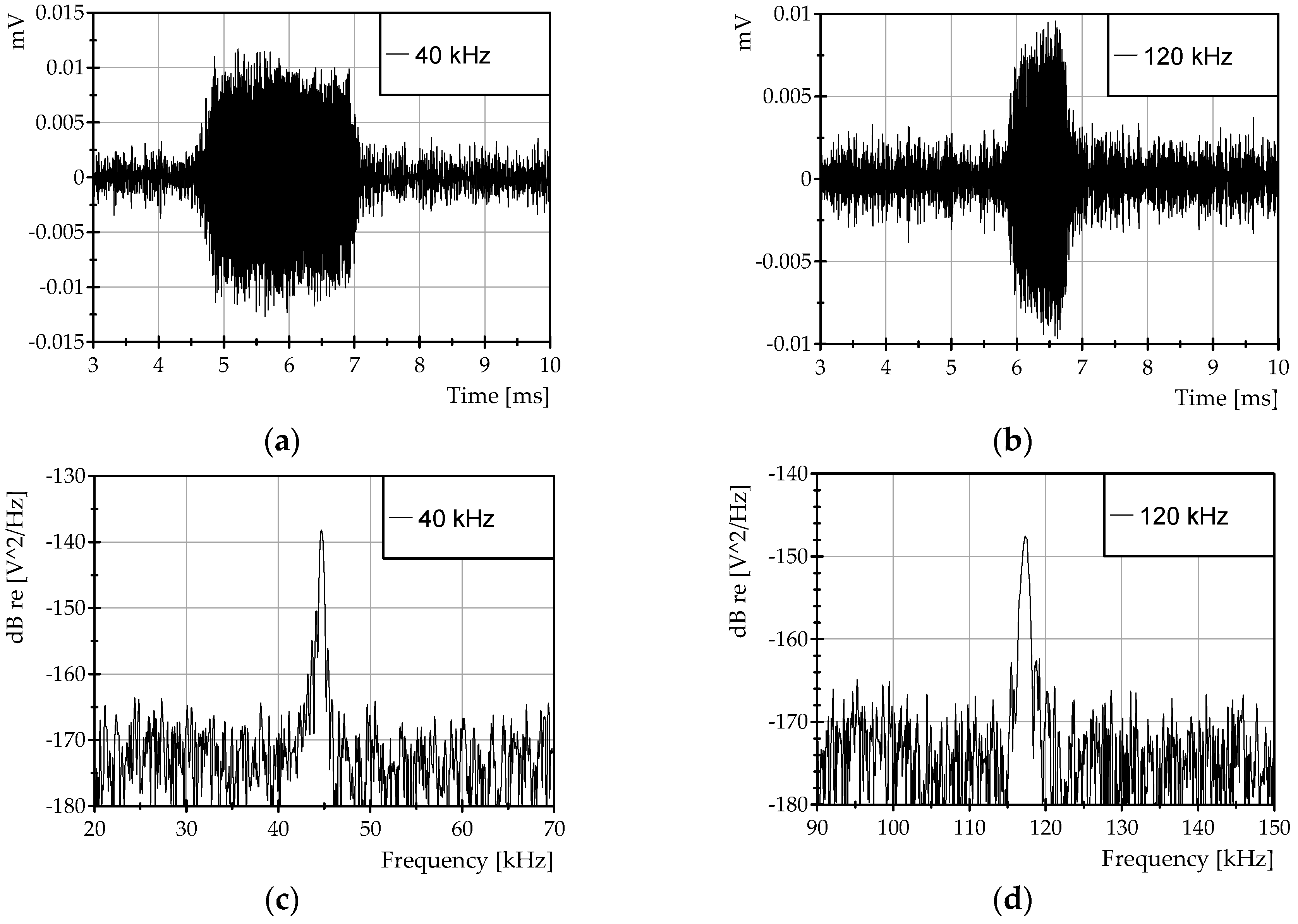
© 2016 by the authors; licensee MDPI, Basel, Switzerland. This article is an open access article distributed under the terms and conditions of the Creative Commons Attribution (CC-BY) license (http://creativecommons.org/licenses/by/4.0/).
Share and Cite
Posada-Roman, J.E.; Garcia-Souto, J.A.; Poiana, D.A.; Acedo, P. Fast Interrogation of Fiber Bragg Gratings with Electro-Optical Dual Optical Frequency Combs. Sensors 2016, 16, 2007. https://doi.org/10.3390/s16122007
Posada-Roman JE, Garcia-Souto JA, Poiana DA, Acedo P. Fast Interrogation of Fiber Bragg Gratings with Electro-Optical Dual Optical Frequency Combs. Sensors. 2016; 16(12):2007. https://doi.org/10.3390/s16122007
Chicago/Turabian StylePosada-Roman, Julio E., Jose A. Garcia-Souto, Dragos A. Poiana, and Pablo Acedo. 2016. "Fast Interrogation of Fiber Bragg Gratings with Electro-Optical Dual Optical Frequency Combs" Sensors 16, no. 12: 2007. https://doi.org/10.3390/s16122007





